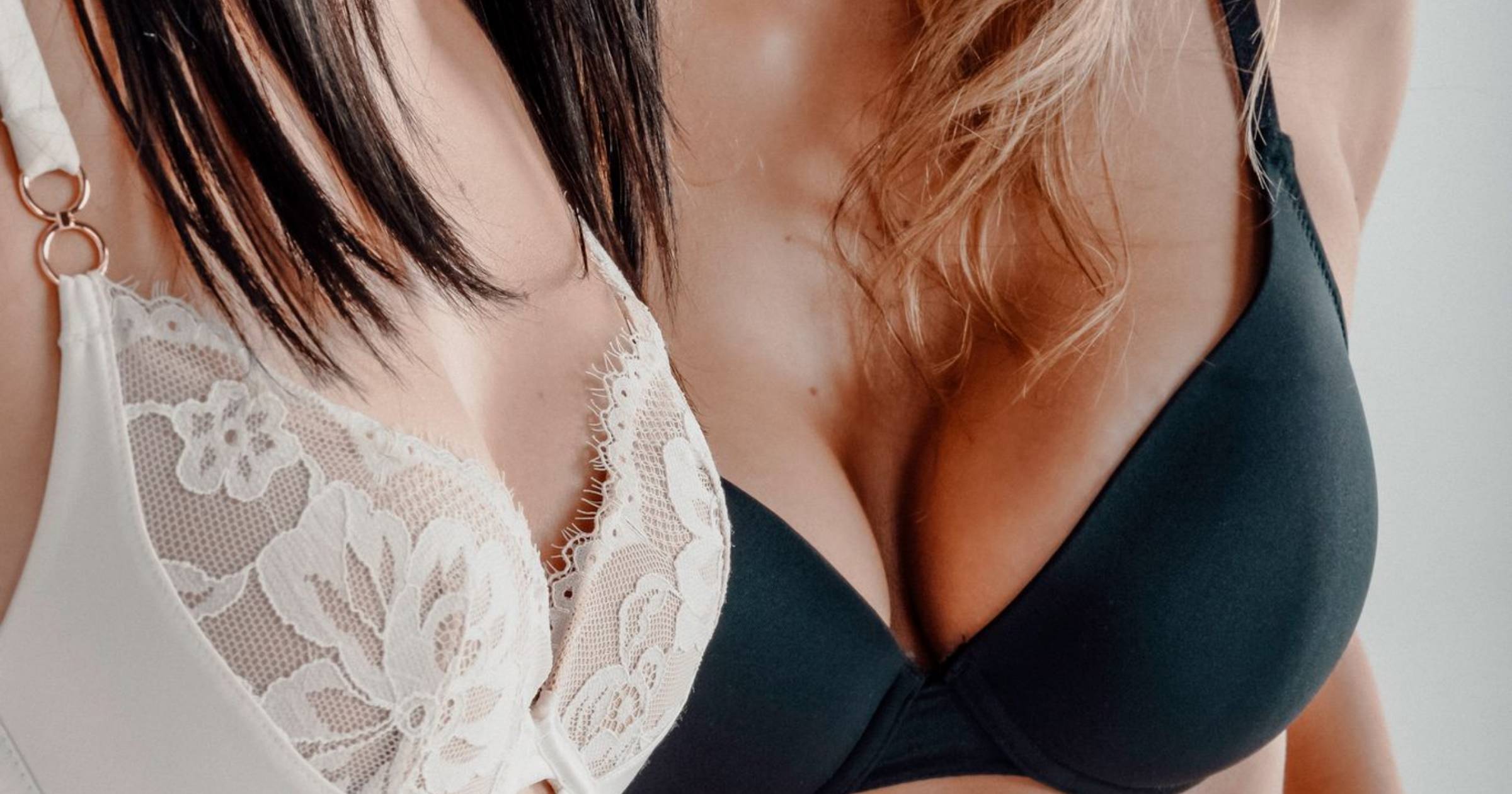How Long Do Breast Implants Last?

Breast implants or breast augmentations are a highly sought after cosmetic procedure today, and for many reasons. This innovative surgical procedure allows patients to not only boost the volume or fullness of their breasts, but to also correct asymmetry of the breasts as well as the shape of the breasts in proportion to the wider chest and body.
However, breast augmentations that involve the insertion of silicone breast implants don’t offer permanent results. Patients are advised that there is some level of care involved in ensuring that their breast implants last for the duration of their estimated usable lifespan. If you’re curious to learn more about breast implants used in breast augmentation procedures and wondering how long breast implants last, you’re in the right place.
Pirk Cosmetic Consultants are experts in all there is to know about cosmetic procedures, and play a crucial role of providing support throughout your journey. We understand you’re probably wanting to find out a bit more about how it all works before deciding if a breast augmentation is right for you. We’re here to provide you with all the information you need to help you make a well informed decision, before arranging a free consultation via our complimentary Cosmetic Consultation service, designed to find your perfect match, from our curated network of qualified and trusted surgeons.
So, read on to discover how long do breast implants last, and how you can take care of them post-surgery and beyond. Both this guide and the other valuable resources found in our Cosmetic Hub here at Pirk are designed to make sure you get the results you’re looking for from all your cosmetic treatments.
Factors to consider on how long do breast implants last:
In this how long do breast implants last guide, we’ll be covering:
- What are breast implants used for?
- The average lifespan of breast implants
- Reasons for early breast implant removal
- Potential complications of breast implants
- How to care for your implants
- How to find a surgeon with Pirk
What are breast implants used for?
Breast augmentations, or breast enhancements as they are sometimes also called, is a cosmetic procedure designed to enlarge the overall volume of your breasts. A surgical incision is made into each breast tissue, where an artificial breast implant is placed into a ‘pocket’. Generally, these are made of sterile saline or silicone solutions.
It’s important to note that a breast augmentation isn’t just about undergoing a one-off surgical procedure. Breast implants are not permanent, so understanding how to support their longevity and what to do if you want or need to take them out or replace them is an important part of the education before deciding to go through with the procedure.
The average lifespan of breast implants
The condition and lifespan of breast implants can vary greatly, but there are a number of factors that can affect how long do breast implants last.
These can include:
- the quality of the implant
- the age of the client
- whether pregnancy and breastfeeding has taken place since the procedure
- a significant weight change
- menopause
So, how long do breast implants generally last? A rough estimate puts them at a lifespan of between 10 and 20 years.
Saline vs. silicone implants
Saline implants are normally ‘envelopes’ holding sterile salt solutions. Silicone implants are made from gel that feels much more similar to natural breast tissue. Extensive research has proven that silicone implants are not linked to an increased risk of cancer and autoimmune disorders, nor will the silicone be passed through to infants from women who are breastfeeding.
The Therapeutic Goods Administration (or the ‘TGA’) has approved certain varieties of silicone and saline based implants, but the procedure must be done by medically-recognised, qualified surgeons, making clear the need for trusted experts you can rely on. That’s why it’s our job at Pirk to pair you with only the most qualified cosmetic surgeons and clinicians across Australia.
What can happen to breast implants?
The implants can collapse if the envelope leaks. The saline solution will be absorbed and expelled naturally by the body, or if a silicone gel implant ruptures, the gel can escape and potentially enter into the breast tissue.
In both instances, the breast shape or size may change, and in some cases, a leaking or ruptured implant may cause pain. Patients are advised that they can monitor the condition of their breast implants during a scheduled MMI or mammogram, however it’s recommended that they seek professional advice if they believe that their implants may be experiencing a suspected leak or rupture.
The longer you have breast implants, the greater your chances become for developing problems. If you do decide to get them removed but not replaced, your breasts may be scarred, dimpled or uneven. The risk of problems developing from breast plants increases from around 8 – 10 years since the initial surgery. Complication rates are roughly the same for both saline and silicone implants, therefore you should aim to have them removed or replaced every 10 years.
Reasons for early breast implant removal
Breast implants don’t last forever, but as a general rule, they should last for around 10 years before needing to be replaced. In some situations, there may be a reason the client wishes or needs to have their breast implants removed before then. We’ll take a look at some of these reasons for early removal or replacement.
Rupture or leakage
The bursting of a silicone gel or saline solution envelope in a breast implant can happen for many reasons, sometimes even simply due to the ageing of the implant. However, newer implants have been designed to keep silicone gel inside the implant even if this does occur. Injury to the area and heavy impact can all also be causes of implant rupture or leakage. In the past, mammograms have also held an extremely small risk of causing breast implants to rupture or leak, namely due to the application of pressure during breast screens. With newer, more durable implants, however, and mammogram specialists amending their screening processes to accommodate patients with breast implants, the risks of rupture caused by your breast screen have become increasingly minimal.
Capsular formation and contracture
When a foreign item enters the body (in this case, an implant), our body’s natural response is to form scar tissue as a barrier around it. In some cases, a scar capsule can tighten and contract to a point that it causes pain or hardening of the breast. This can occur weeks to years after the initial implantation, and capsulotomy surgery may be needed to remove the capsule. Patients are advised to seek professional help if they believe that they may be experiencing capsular formation and contracture.
Granulomas (non-cancerous lumps)
If leaked silicone does accumulate in the breast tissue, or the lymph nodes in the armpit area, it can become surrounded by inflammatory tissue known as granulomas. These are non-cancerous lumps, but must still be examined by your doctor or surgeon.
Mastectomy
For those undertaking mastectomy surgery, there is often an associated requirement for radiotherapy, which affects the elasticity of the chest skin. This may make it harder for the implants to stay in place, or in some cases where the breast tissue is removed completely, it is not possible for the breast implant to remain. If patients are planning to undergo a mastectomy, it’s imperative that they speak to their surgeon to ensure that their treatment plan accommodates their breast implants. Doing so will reduce the risks of your breast implants experiencing a leak or rupture.
Loss of feeling or sensitivity
For some people, breast implants can cause numbness around the region, or alternatively a heightened sensitivity that is not always desirable. After a number of months or years, the client may decide they would like to have their implants removed or even replaced with smaller implants as an aesthetic or personal preference. In all cases, patients are advised to speak with their breast implant specialist to determine which path of action is best suited to their personal care needs.
Breastfeeding
Though breast implants are not dangerous to breastfeeding infants, some mothers may choose to have their implants removed during pregnancy to aid in the milk production, especially if they have experienced a loss of feeling or sensitivity. Some may find it is more difficult to breastfeed with implants due to the changed shape of the breast or nipple.
Potential complications of breast implants
Staying in control of your breast implants, and taking steps to enhance the longevity of your breast augmentation, is all about staying pro-active. Below are some of the complications to be aware of, as well as how to respond to them.
Local infection
In the weeks and months following your operation, there is the risk that your body may reject the new implants, or that the breast tissue or surrounding skin area may become infected. This is a risk with all surgical procedures but one worth being made aware of all the same, and you should consult your GP or surgeon if you suspect infection after the procedure.
Permanent scarring
Some level of scarring is inevitable with any cosmetic or surgical procedure, however for some this may be more prominent than others, especially if exposed to direct sunlight in the initial months following recovery. Scarring will likely fade over time, but you may need to have another operation in the future to replace or remove them. Securing scarring treatments via your breast implant specialist or even with a dedicated scarring specialist can help sustainably reduce the visibility of scars.
Changes to breast shape or asymmetry
Whilst asymmetrical or uneven breast shape can be an aesthetic complication of the procedure, it can also be a warning sign that one of the implants is leaking or has ruptured. If coupled with other symptoms such as pain, numbness or hard breast tissue, this may be a sign that there is a complication in the area. If you have any reason to believe that you may experience a leakage or rupture of your breast implant, then you should seek professional medical care ASAP. Although leaking or ruptured breast implants aren’t considered a medical emergency in most cases, phoning your GP and/or your breast lift surgeon can help reduce the risks of your leakage or rupture causing any adverse complications. It’s always best to err on the side of caution.
Double bubble breast implant
A double bubble breast implant is a rare complication when the implants do not perfectly align with the client’s natural breast tissue crease, causing a shelf-like second bulge underneath the main bust. This can be caused by the surgeon altering the natural breast fold, or through natural sagging due to ageing. A correctional procedure (mastopexy) can be performed to correct this deformity.
Breast cancer screenings
Implants can affect the accuracy of a mammogram, which all women should routinely have to inspect for lumps in the breast tissue. Therefore, it’s essential to tell your GP or practitioner that you have implants so they can make some minor adjustments to this procedure.
How to care for your implants
The best way to care for your implants and overall health and wellbeing is to stay vigilant to changes in that area of your body. Regularly consult with your GP or surgeon for routine checks on the condition of your implants, including through mammograms and ultrasounds. Look out for the warning signs we’ve mentioned above, and schedule yourself in to have your implants removed or replaced ahead of the 10-year recommended period.
In the months following your surgery, gentle massage around the breast tissue can help to restore feeling, ease uncomfortable sensitivity, and reduce the growth of scar tissue.
A healthy lifestyle and drinking plenty of water will keep your skin elastic and supple, and slow down the natural ageing process of drooping breasts, which may alter the shape and appearance of your breast. If you find that sagging breasts are affecting your confidence or attitude towards your body, you may be interested in a breast lift to restore the shape, which can be done with or without breast implants.
How to find a surgeon with Pirk
If we’ve Pirk’d your interest in breast augmentation procedures, don’t hesitate to get in touch with our Cosmetic Consultants, who will pair you with a professional network of some of the most highly-esteemed, trusted surgeons in the country.
Call Pirk today on 1300 114 426, or get in touch online to arrange your free consultation, and save yourself the time and stress of hours of scouring the internet for the right surgeon. We’re experts at finding experts, so leave it up to us.
Stay abreast of our updates and useful resources over on our helpful Cosmetic hub. So, you can read more about how long do breast implants last or on our other articles about everything you want and need to know about all the procedures we offer, including post-surgery tips and tricks for quick recovery.
The information presented on the Pirk website is intended for general informational purposes only and should not be considered professional advice. While we collaborate with qualified surgeons and specialists, we are not medical specialists, and the content provided is of a general nature. It is strongly recommended to seek personalised professional advice tailored to your specific situation.
If assistance in finding a qualified surgeon is needed, Pirk can offer support. This content does not constitute personal advice, diagnoses, or treatment plans. By reading our blogs, you acknowledge and accept these terms. For further assistance or clarification, please contact us at hello@pirk.au.

